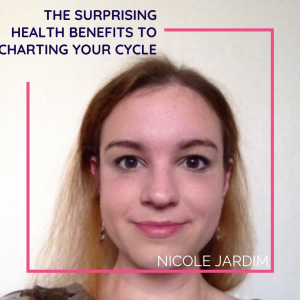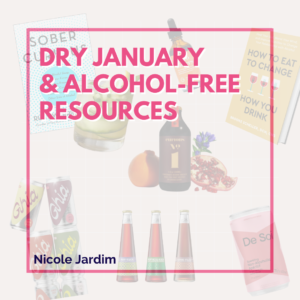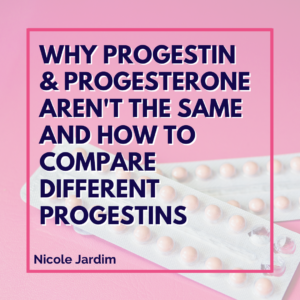Guest post by one of my star apprentices, Rachel Dutton of The Period Whisperer
Do you find it frustrating when you are working on getting your periods or fertility back under control, and you have no idea what is working and what isn’t?
If you are wondering why anyone who charts their cycle is so keen to talk about it (yes we can get a little obsessed), read on.
If you’re thinking, “I’m not interested in natural birth control” or “that is so complicated…yawn” whenever anyone mentions charting, NFP, or FAM, then this article is for you.
Charting isn’t just a way of telling whether you are fertile or not, it is a window into your body’s hormonal health and wellbeing. Find a good teacher or practitioner and they can help you interpret what your chart is saying about your health.
If you are making changes to your diet, lifestyle and overall wellbeing that are long term and sustainable, it can take a while for your period to normalise. But when you start charting your cycle, you can start to see which habits, interventions and changes are having the most impact and whether or not they are helping.
I could talk about this for ages, but here are just a few of the numerous ways in which charting can help you work out what is going on with your cycle.
- How stress affects your body
Stress is one of the worst things for your menstrual cycle, periods and fertility. It can shut off your reproductive system, cause pain, delay ovulation and shorten the luteal phase. However, what causes you to feel stressed (sleep patterns, deadlines at work, a crazy commute, or a major life event) and how much stress affects your hormones, is individual to you.
When you start charting your cycle, you can see when something is off and tie that in to various events in your life.
- How food affects your body
Most people know that alcohol affects your basal body temperature (BBT) as your body will heat up, but also any foods that are triggering inflammation (think mild allergies and intolerances) will show up in your chart too. If you eat a relatively clean diet and then eat something that triggers an inflammatory reaction in you, you will often see a corresponding rise in your BBT.
- You can tell what is going on with your hormones
Both BBT and cervical fluid can tell you a lot about what is going on with your oestrogen, progesterone, thyroid hormones, insulin and blood sugar levels. You may even find other pituitary issues will crop up in your chart. A skilled practitioner will help you identify these issues and guide you in reading your chart to see how it responds to any changes you make.
- You can pick up health conditions earlier
When you know what a normal cycle pattern for you looks like, what bleed patterns are happening and what cervical fluid is normal for you, you spot changes in these a lot earlier. Sometimes you can pick up infections, cervical dysplasia, endometriosis, and fibroids much earlier because you know what is normal for you, and these things are much easier to deal with when you find them earlier on.
- You can save time (and possibly money) on medical appointments
I don’t know about you, but I spent 15 years going back and forth to the doctors with various period and hormone-related issues, and it was soul destroying at times. Even though I read up a lot on various theories, suggestions and diagnoses, it was so disempowering to not have a clue what was going on with my body and no one could give me answers. In all honesty, I felt like a victim who had all this bad stuff happening to her.
When I began learning about my cycle and became more body literate through charting, I could start having sensible conversations with doctors, ask questions on why they thought what they did and get feedback on whether my charts indicated the same thing.
It completely changed my relationship with the healthcare system and I felt like I was involved in my care and could affect the way my body responded to various interventions.
When you turn up to the doctor knowing what your charts say and possible reasons they appear the way they do, you can save a lot of time (and money if you have to pay), by getting more relevant referrals and testing right off the bat, rather than going from one appointment to the next wondering what the next test will involve.
Where To Start
As you can see there are some pretty awesome benefits to charting and you can even use it to help achieve or avoid pregnancy too! You will no doubt find many more great things about charting when you start on your charting journey and to be honest, it is so addictive once you get into it.
There are a number of charting methods out there, and whilst symptom-thermal methods will tell you the most straight away, you can start off by charting one bit first and seeing what that looks like before adding in the rest. The symptom-thermal methods available are Natural Family Planning (NFP), Fertility Awareness Method (FAM), Creighton and Justisse, but there are other methods out there too.
I always recommend finding a skilled teacher, as it is much easier than learning from a book. There are online courses, webinars, apps and classes both in person and on Skype.
Resources
Click Here to get my basic guide to charting and understanding your cycle and you will also be notified when I do my charting for health, fertility or contraception webinars.
Download the instructions from the Natural Family Planning Teacher’s Association website for free PDFs on how to chart to achieve or avoid pregnancy. http://www.nfpta.org.uk/tutorials/
Books:
- Justisse Method: Fertility Awareness and Body Literacy, A User’s Guide: Volume 1 by Geraldine Matus
- Taking Charge of Your Fertility: The Definitive Guide to Natural Birth Control, Pregnancy
 Rachel is a menstrual and fertility specialist, a qualified Natural Family Planning Teacher, Fertility Massage Therapist, Reflexologist and health coach. She is passionate about teaching women how their bodies work and teaching women how to work with their cycle. She has a clinic in Surrey, UK and has a Skype clinic and webinars for women interested in learning more about their own reproductive health.
Rachel is a menstrual and fertility specialist, a qualified Natural Family Planning Teacher, Fertility Massage Therapist, Reflexologist and health coach. She is passionate about teaching women how their bodies work and teaching women how to work with their cycle. She has a clinic in Surrey, UK and has a Skype clinic and webinars for women interested in learning more about their own reproductive health.
You can find her at The Period Whisperer and Womb Tube, the youtube channel for all things women’s health.




0 thoughts on “The Surprising Health Benefits to Charting Your Cycle”
Hey I’m new here I’m a 33 yr woman my period always regular it came on Feb.9 and went off Feb.13 now it came on march.5 and went off march7 so what’s going on am I pregnant or what?